by Lorri | Jan 30, 2013 | UnCorked
 Of course I love tasting wine … but tasting wines with the rock stars of the wine industry takes tasting to a whole new level. Earlier this month a group of Napa winemakers and owners convened on our perfect share of the South.
Of course I love tasting wine … but tasting wines with the rock stars of the wine industry takes tasting to a whole new level. Earlier this month a group of Napa winemakers and owners convened on our perfect share of the South.
In the weeks to come, this column will feature some of those winemakers and their wines.
First up is Steve Reynolds, owner and winemaker of Reynolds Winery. Reynolds is just one of those guys everyone wants to be around.
We’ve met on several occasions and I always look forward to sharing a glass of wine with him, with his laid-back personality and wonderful sense of humor.
His father was a hobby winemaker, so Reynolds was around the craft most of his life. When his family lived in Germany, they spent vacations as many wine-loving European families do: in the sacred vineyards of Europe. Sacred for his father I’m sure, but not so much for most kids.
I have dragged mine around on such adventures for years, and understand this amusing part of his childhood.
In 1994, Reynolds left his career as a dentist and, with his wife, Suzie, bought a 100-year-old chicken ranch that needed “lots of love” to have potential for fine winemaking. As tribute to their substantial hardships – the stigma of being a newcomer to Napa Valley, arduous startup politics and other challenges – Reynolds aptly, if not a little wryly, named one of his red blends “Persistence.”
Today, the Reynolds family remembers the journey, and those of us honored to savor their wines look forward to their future limited-production, hand-crafted wines known throughout the world.
- 2006 Reynolds Family Winery Napa Valley Chardonnay, California (about $38 retail)
- 2006 Reynolds Family Winery Persistence, California (about $58 retail)
by Lorri | Jan 23, 2013 | UnCorked
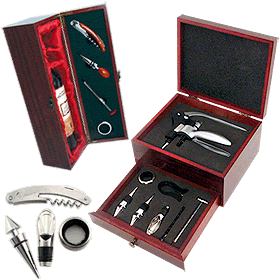 Wine alone is amazing, but adding ideal accessories can make the experience of drinking and collecting wine extraordinary.
Wine alone is amazing, but adding ideal accessories can make the experience of drinking and collecting wine extraordinary.
THE NOVICE WINE DRINKER
The novice who only opens bottles on special occasions only needs a few items. As you gain and explore more wine options you’ll know its time to begin adding to your accessories. Most likely, adding different styles of wine glassware will be your first expansions.
- The equipment: Basic wine opener, all-purpose wine glass, champagne flutes, bottle cooler and small wine rack.
THE AMBITIOUS WINE DRINKER
Most wine drinkers have expectations of what they prefer to drink but many people are moving away from the single wine choice and becoming more adventurous, one day drinking a Spanish Cava and the next a California cabernet. Anyone who is exploring and building upon a collection needs useful accessories, but most important is appropriate glassware.
- The equipment: White, red and champagne flute glassware, decanter, ice bucket, capsule (foil) cutter, higher grade wine opener, wine carrier, wine thermometer, a vacuum pump for storage, cleaner that removes wine stains and a wine storage rack and/or a wine refrigerator.
THE CONNOISSEUR WINE DRINKER
The connoisseur may or may not be a wine professional. However, this is the person who takes wine appreciation to the next level. If money is not an object, the wine main accessory should be a home built around the design of your wine cellar not the other way around. If you are at this level in your exploration, you most likely have all the required tools, but are looking to add accessories to your stash.
- The equipment: Decanting funnel, glass polishing cloth, magnetic wine collar, Laguiole corkscrew, label remover, champagne re-sealer, a wine wand, decanting carafes for a single bottle and magnums, Champagne pliers and varietal specific glassware.
by Lorri | Jan 16, 2013 | UnCorked
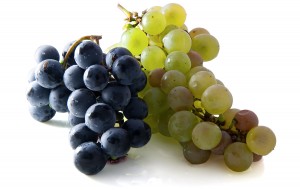 This time of year many of us are looking for a healthier start and ways to make better choices.
This time of year many of us are looking for a healthier start and ways to make better choices.
And we often hear about the heart-healthy benefits of alcohol, but also the disadvantages.
A recent news release offered some insightful information on the debate. So what is the truth behind alcohol use and your heart? The answer, in short, is moderation.
“The kind of alcohol you drink matters too,” says cardiovascular, thoracic and vascular surgeon Jonathan Fong of the Venice-Ocala Heart Institute in Venice, Fla.
“The possible heart benefits of alcohol primarily have to do with its effect on atherosclerosis,” explained Dr. Fong in the release. “This condition occurs when cholesterol deposits build up in the arteries, potentially leading to a heart attack. However, alcohol – in moderation – may decrease the chances of developing this disease.”
Red wine has been the focal point of many studies regarding alcohol and heart health. It has been shown to offer the same benefits as other forms of alcohol, but it does have one additional ingredient that may give it a slight advantage over other alcohols. This component, called resveratrol, is an antioxidant that helps protect the lining of the heart’s blood vessels and comes from the grape skins used to make the wine. Because red wine is fermented with these skins longer than white wine, red wine contains more of this healthy ingredient. But white wine lovers need not switch to red just yet. New research suggests the pulp of the grapes used can be just as heart-healthy as the skin.
“Healthy ‘doses’ of alcohol are small ones and only beneficial for some – not all – people,” says Fong. “And these amounts differ between men and women.”
According to the American Heart Association, moderate drinking for healthy men means no more than two servings per day, and for healthy women, no more than one glass a day. One approved serving of alcohol consists of:
- 12 ounces of beer
- 4 ounces of wine
- 1.5 ounces of 80-proof liquor
- 1 ounce of 100-proof liquor
So, while alcohol has been shown to have some heart healthy benefits, before enjoying a few drinks in honor of our body’s most important muscle, remember that moderation is key.
by Lorri | Jan 9, 2013 | Tips, UnCorked
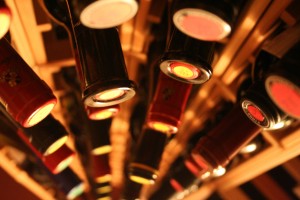 This is the second in a two part column about wines to stock in order to have a variety on hand.
This is the second in a two part column about wines to stock in order to have a variety on hand.
Last week we looked at the first six bottles of wines to consider when starting a collection. This second group rounds out the assemblage with more food-friendly wines for a variety of occasions.
ALWAYS THE SEASON
Of course port is ideal during Thanksgiving and Christmas, but it is often overlooked as the perfect dessert wine or ending to a meal. Vintage port can command high prices – from hundreds of dollars and beyond, depending upon the year. But the high price doesn’t mean budget-savvy drinkers have to forgo port. The bottle I would have on hand would be another version of port, the tawny port.
Tawny port is identified by age (10 or 20 years old) rather than vintage. The age refers to how long the port matured in the cask. This difference also is reflected in the price, making the tawny a great value to have on hand.
- Taylor Fladgate 10-Year-Old Tawny Port, Portugal (about $35 retail)
FOOD’S BEST FRIEND
Riesling is the ideal foodfriendly white wine. It’s the acidity in the wine that allows almost any food to show off and not be overpowered by tannins or full-bodied style. This grape generally has a lower alcohol level than most white wines, which is another plus.
- 2007 Grand Cru Saering Riesling, France (about $32 retail)
FAMILIAR WHITE
Chardonnay is still the most recognizable grape for most wine drinkers. Many chardonnay styles can be high in oak and high in alcohol. The bottle I would have in my case would be a French style or a balanced, less oaky California. This addition is another wine guests will be familiar with and it pairs with almost every white-meat dish.
- 2011 Louis Jadot Macon-Villages Chardonnay, France (around $13 retail)
THE FRESH ITALIAN
Moscato d’Asti should be enjoyed when it’s young and fresh. This is one of the few wines I would recommend you add to your collection, with the plan being to open it within 3 months of when you bought it. It needs to be served chilled and pairs with an array of foods ranging from breakfast to dessert.
- 2012 Vietti Moscato d’Asti “Cascinetta Vietti,” Italy (about $16 retail)
MUST-HAVE FAVORITE
Gewurztraminer is a great partner for lighter foods and anytime on its own. It is one favorite everyone should have in a collection.
- 2010 Pierre Sparr Gewurztraminer, France (about $18 retail)
A WINE MADE FOR DINING
Last but not least is Chianti. This Italian wine was made for food. The main reason I enjoy having this wine on hand is its effortless way of pairing with a range of foods – from cold pizza to homemade pasta sauces. And there’s no reason to spend a lot of money because many Chiantis can be found for less than $20.
- 2010 Cecchi Chianti Classico, Italy (about $14 retail)
by Lorri | Jan 2, 2013 | UnCorked
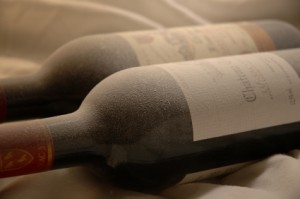 This will be a two-part column about recommended wines to stock in order to have a variety on hand.
This will be a two-part column about recommended wines to stock in order to have a variety on hand.
The idea of starting your own wine collection or filling a cellar is very intimidating for most of us. But keep in mind only a minuscule percentage of wine drinkers are actually buying and investing in fine wines to age and cellar for extended lengths.
Most of us are simply interested in buying wines to drink and enjoy while taking advantage of the convenience of selecting a bottle at home rather than making a special trip to the wine shop for every occasion.
Many readers ask me what wines I recommend for keeping a case on hand or what I would select for starting a collection. I think a great place to start is with a variety of wines from light to fullbodied, sweet to bubbly, and wines for many occasions. You don’t have to have a cellar to begin collecting. It can start with a wine rack, corner of the refrigerator or even the back of your closet.
SPARKLING
If you are ever stumped or in doubt about which wine to pair with your creation, grab a bottle of bubbly. Sparkling styles are extremely versatile to have on hand, whether for toasting a special occasion or serving with salty or fried appetizers or just about any entree you could craft. I also like to keep a bottle or two on hand for a great last-minute hostess, birthday or anniversary gift. There’s no need to spend a lot, because there aremany values ranging from $10 to $20 a bottle with excellent quality.
- NV Piper Sonoma Brut Sparkling, California (about $15 retail)
WELL-ROUNDED WHITE
The go-to bottle for salads, seafood, vegetables and most cheeses is sauvignon blanc. This crowd-pleasing wine has a refreshing acidity, light body and tropical fruity taste.
- 2011 Honig Sauvignon Blanc, California (about $16 retail) BLUSHING BEAUTY
Many of you already knowmy thought on rose wines is that they are very underrated. This incredibly versatile style should be part of everyone’s case on hand. It is appropriate for the most formal occasion or an outside picnic and can pair with meats ranging from light to dark. The key is staying with a dry or off-dry choice.
- 2011 Cline Vineyards Rose, California (about $15 retail)
WHERE THERE’S SMOKE
For avid grillers, syrah/shiraz is must-have in the collection. It’s as if this wine was created solely for full-bodied, earthier red meats and other foods cooked over an open flame.
- 2010 Wyndham Estate Shiraz Bin 555, Australia (about $14 retail) COMFORTABLY RED
If for no other reason than its familiarity for guests, a cabernet sauvignon is important to have on hand. It matches well with hearty meats and pasta dishes and soups and cheeses. I keep a few bottles on hand to serve as an option as a quick gift.
- 2010 Liberty School Paso Robles Cabernet Sauvignon, California (about $15 retail)
PLAYS WELL WITH OTHERS
Wine experts and chefs agree: Pinot noir is the ultimate food-friendly red wine. Also it’s an ideal wine for dinner menus where red meat and fish are being served.
- 2010 Estancia Paso Robles, California (about $14 retail)
by Lorri | Dec 26, 2012 | UnCorked
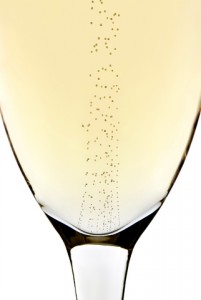 Following the hectic bustle of Christmas shopping, travel and choices galore, it’s refreshing knowing that buying the ideal wine for New Year’s Eve is an uncomplicated decision. The tradition poured into the magical midnight toast only seems possible if you see tiny bubbles dancing in the glass. Not to say other wines, beers and spirits are not welcome at the occasion, but something about the sound of Champagne flutes clinking in a toast as the clock strikes midnight makes it an unquestionable choice.
Following the hectic bustle of Christmas shopping, travel and choices galore, it’s refreshing knowing that buying the ideal wine for New Year’s Eve is an uncomplicated decision. The tradition poured into the magical midnight toast only seems possible if you see tiny bubbles dancing in the glass. Not to say other wines, beers and spirits are not welcome at the occasion, but something about the sound of Champagne flutes clinking in a toast as the clock strikes midnight makes it an unquestionable choice.
THE HISTORY
Our fascination with Champagne is linked to its long history and an extensive list of contributors along the way, Dom Perignon undeniably the most famous. But a few other discoveries had to come before Perignon could declare: “Brothers, brothers, come quickly for I am seeing stars.”
Two of those developments occurred around the same time – the development of stronger glass for the bottle and an airtight cork closure. Before the
17th century, wine was stored in casks and individuals took their own fragile bottles to local wine merchants, where they were filled and an oil soaked rag acted as the cork. Things changed when King James I requested that Sir Robert Mansell, an Admiral of the Fleet, stop using wood for heating the furnaces that produced glass because of his fear they would not have enough oak for shipbuilding. Wood was replaced by sea coal, which created a higher temperature and produced a stronger glass. About the same time, cork was discovered and replaced the oil-soaked rag, and voila, the industry was on its way to what we think of when we drink modern-day Champagne.
THE BOTTLE SIZE
A typical Champagne bottle is 750 milliliters; however, many other bottle sizes exist. The rare sizes are also known by the names of biblical kings:
Magnum (1.5 liters), Jeroboam (3 liters), Rehoboam (4.5 liters) Methuselah (6 liters), Salmanazar (9 liters), Balthazar (12 liters), Nebuchadnezzar (15 liters) and the rare Sovereign, which holds 125 glasses for your guests.
THE TOAST
The toast is also part of the tradition and magic of Champagne, sparkling wine or anything that bubbles. As early as the sixth century B.C.- the Greeks were toasting to good health, longevity and loved ones. The gesture was not simply symbolic, as are today’s toasts, but much more literal and practical. Sixth-century wine drinkers were often served intentionally poisoned vino – a common way of dispatching a rival or solving social problems. Thus began the custom of the host pouringwine into a glass, taking a drink and then toasting while raising his glass to friends and guests.
The modern-day toast is not as complicated, but there are a few simple tips to remember. Be simple and meaningful to those who you are offering the toast, stand and be brief, and end on a positive note by offering “cheers” or “raise your glass” for those you are toasting.
THE LABELS
The label can be the trickiest part for consumers. Most Champagne or sparkling wine will be brut, which means dry, but also you’ll see sec (which literally means dry) but in terms of Champagne means off-dry. Demi-sec is a medium-dry style, with noticeable sweetness. The sweetest are douz and moelleux.
 Of course I love tasting wine … but tasting wines with the rock stars of the wine industry takes tasting to a whole new level. Earlier this month a group of Napa winemakers and owners convened on our perfect share of the South.
Of course I love tasting wine … but tasting wines with the rock stars of the wine industry takes tasting to a whole new level. Earlier this month a group of Napa winemakers and owners convened on our perfect share of the South. Wine alone is amazing, but adding ideal accessories can make the experience of drinking and collecting wine extraordinary.
Wine alone is amazing, but adding ideal accessories can make the experience of drinking and collecting wine extraordinary. This time of year many of us are looking for a healthier start and ways to make better choices.
This time of year many of us are looking for a healthier start and ways to make better choices. This is the second in a two part column about wines to stock in order to have a variety on hand.
This is the second in a two part column about wines to stock in order to have a variety on hand. This will be a two-part column about recommended wines to stock in order to have a variety on hand.
This will be a two-part column about recommended wines to stock in order to have a variety on hand. Following the hectic bustle of Christmas shopping, travel and choices galore, it’s refreshing knowing that buying the ideal wine for New Year’s Eve is an uncomplicated decision. The tradition poured into the magical midnight toast only seems possible if you see tiny bubbles dancing in the glass. Not to say other wines, beers and spirits are not welcome at the occasion, but something about the sound of Champagne flutes clinking in a toast as the clock strikes midnight makes it an unquestionable choice.
Following the hectic bustle of Christmas shopping, travel and choices galore, it’s refreshing knowing that buying the ideal wine for New Year’s Eve is an uncomplicated decision. The tradition poured into the magical midnight toast only seems possible if you see tiny bubbles dancing in the glass. Not to say other wines, beers and spirits are not welcome at the occasion, but something about the sound of Champagne flutes clinking in a toast as the clock strikes midnight makes it an unquestionable choice.